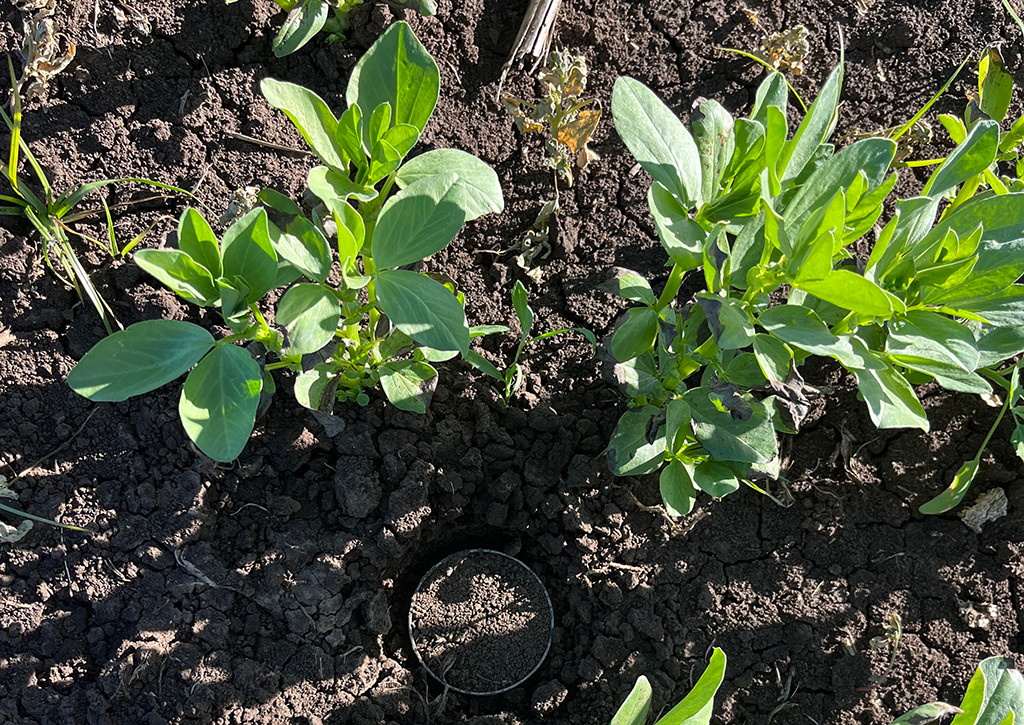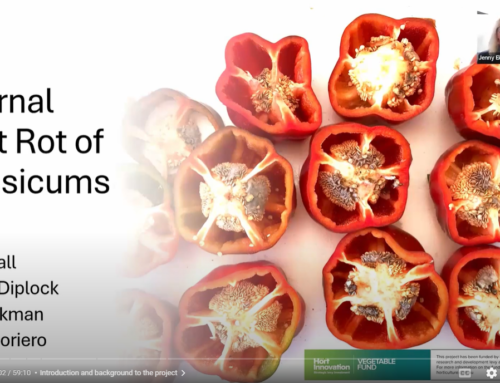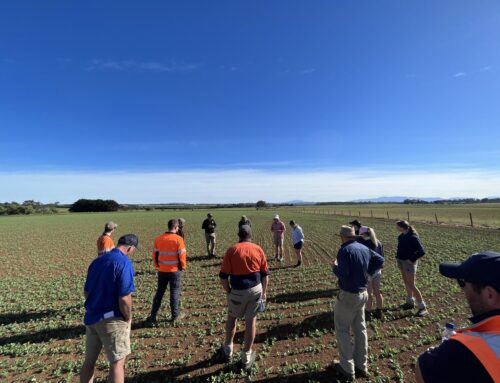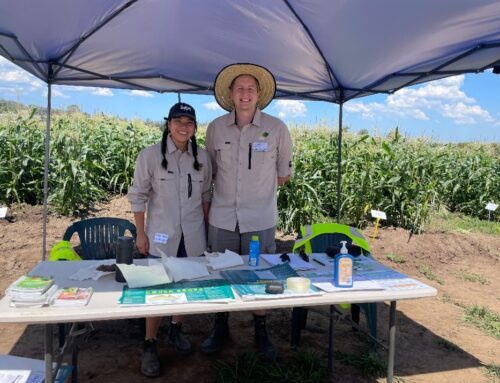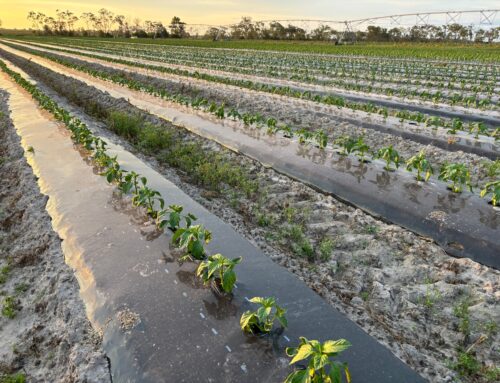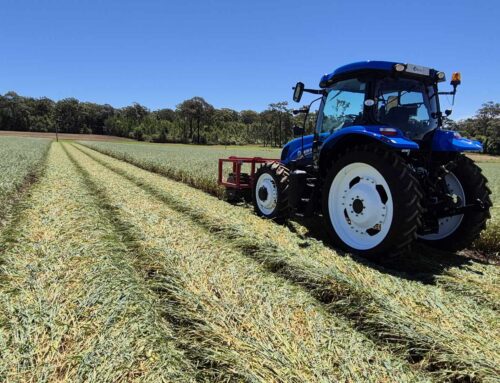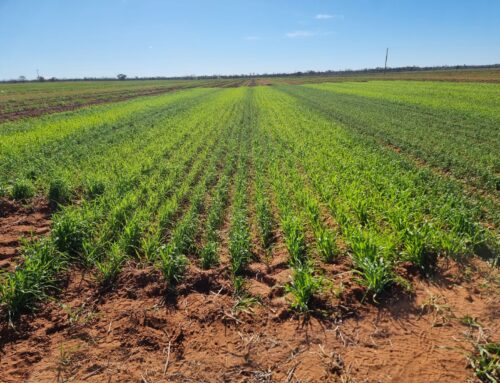As the costs of inputs continue to bite, growers are increasingly turning towards organic alternatives to meet the nitrogen demands of their vegetable crops.
The Soil Wealth ICP team together with Mulgowie Farms in the Lockyer Valley, Queensland are particularly interested in legumes to synchronise nitrogen supply with the specific demands of a sweet corn crop.
“We know legumes boost nitrogen in the soil, but timing also matters. Making sure that nitrogen is present in the right form and at the right time – that is critical,” Soil Wealth ICP team member (AHR) Steph Tabone explains.
How do legumes supply nitrogen?
Legumes possess the unique ability to fix atmospheric nitrogen through a mutually beneficial (symbiotic) relationship with rhizobia bacteria. Consequently, the nitrogen acquired by legumes is stored in an organic form within the plant.
However, for this nitrogen to become accessible to other plants, the legume residue must undergo decomposition, during which microbes mineralise the nitrogen into essential forms like nitrate and ammonium. The rate and timing of this mineralisation process are influenced by factors such as soil temperature and moisture, and legume residue composition (C:N ratio).

Figure 1: Faba beans at flowering on 23 August 2023, the date of termination by incorporation and spraying.
The trial so far
Faba bean seed was inoculated with the right rhizobia bacteria and sown on 9 June 2023. The faba bean crop was then grown through to August, before differing termination methods were applied to look at nitrogen availability from the legumes under the different termination methods (see Figure 2):
- Faba bean crop terminated green at flowering by incorporation in August 2023 (low C:N ratio and mixed into the soil)
- Faba bean crop terminated at flowering by spraying and rolling, leaving the residue brown on the soil surface in August 2023 (medium C:N ratio and left on soil surface)
- Faba bean crop harvested for grain at maturity with stubble left standing (high C:N ratio, stubble left standing and some nitrogen removed in the grain)
- Fallow with no faba bean, but some weeds (as a control).
Throughout the trial, soil moisture and temperature, and monthly soil nitrate levels have been monitored. Additionally, faba bean C:N levels were assessed at flowering and at maturity.
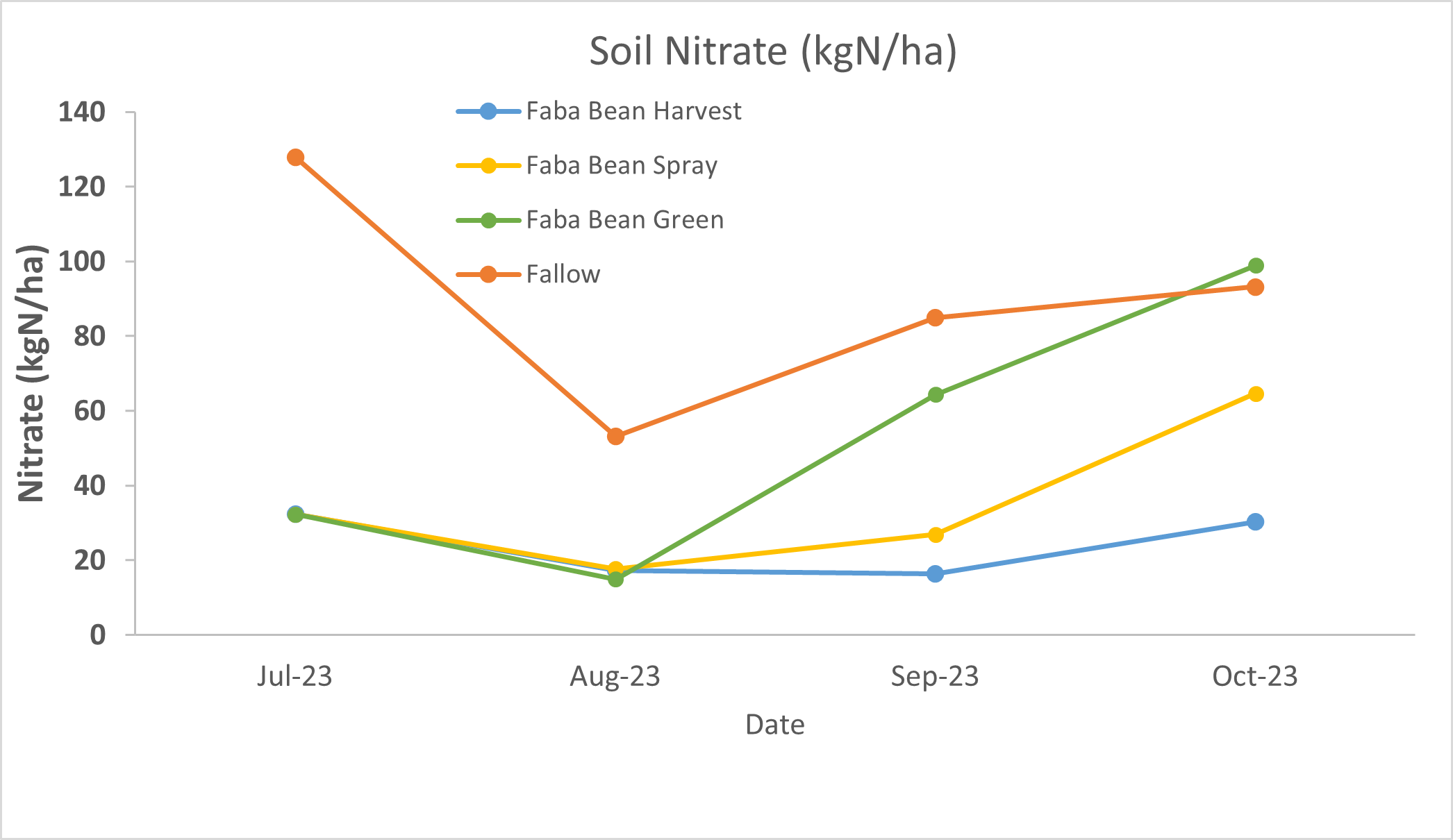
Figure 2: Soil nitrate-nitrogen levels across treatments.
Results
A nitrogen budget with a breakdown of available nitrogen in various forms and quantities has revealed the following:
- Nitrogen available in the soil was 32kg N/ha under the faba cover crop and 128kg N/ha in fallow area two months after planting, while the faba bean cover crop was still growing. Available nitrogen under fallow is very prone to losses over winter. Having a cover crop to take up most of this nitrogen safely stores the nitrogen for the following crop. In this case 100kg N/ha were stored for the next cash crop.
- Nitrogen added through the faba bean legume cover crop was estimated at 242kg N/ha at maturity.
- The noticeable decline in nitrate levels in the fallow area during August could be attributed to nitrogen uptake by weeds, given the lack of significant rainfall, minimising the likelihood of nitrogen loss through leaching.
- Post-termination, several changes have been observed in soil nitrate levels:
- The green treatment, involving the incorporation of green faba bean residues with a low C:N ratio of 11, produced rapid mineralisation of the faba bean residues to soil nitrate.
- In contrast, the sprayed treatment produced minimal mineralisation during September with the medium C:N and residues left on the surface slowing mineralisation. In October, this nitrogen started to become more available with soil nitrate levels starting to increase. This increase coincided with the steady rise in soil temperatures, possibly contributing to enhanced biological activity supporting nitrogen release.
- The faba bean cover crop taken to harvest maturity had the slowest release of nitrogen. The higher C:N ratio of 37, and standing stubble, slowed the release of nitrogen.

Figure 3: Faba bean crop terminated at flowering by incorporation (left) and terminated at flowering by spraying and leaving residue brown on the soil surface (right).
What’s next?
Ultimately, this trial wants to answer a number of key questions. Namely:
- Which legume management method delivers the most available nitrogen? Is this the right amount/timing to meet corn nitrogen demands?
- Can legume nitrogen replace the base fertiliser nitrogen?
- Can you use side dressing with nitrogen to tactically respond to the nitrogen released from the different management methods of legumes?
- Can organic nitrogen sources (legume + soil organic matter) meet crop requirements and produce good yield and quality?
The sweet corn planting in early December includes planting an area without base fertiliser to assess the availability of nitrogen from the faba bean crop.
“We plan to sample soil nitrate and nitrogen in the corn strategically with a side dressing of fertiliser applied where appropriate,” Steph said.
“Crucially, comprehensive assessments of corn yield and quality will be conducted at harvest.
“We can then be confident in the data regarding the effectiveness of organic nitrogen sources in meeting crop requirements while ensuring robust yield and quality standards.”
Acknowledgements
We’d like to acknowledge the continued efforts and engagement of the Mulgowie team with the Soil Wealth ICP demo site.

Figure 4: Faba bean crop harvested for grain at maturity (left – before harvest; right – after harvest).

